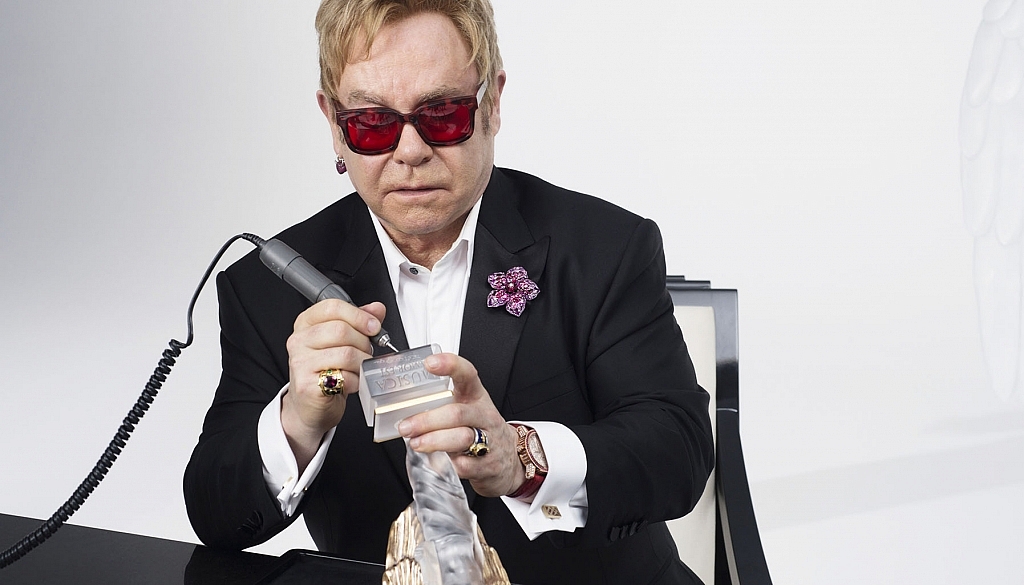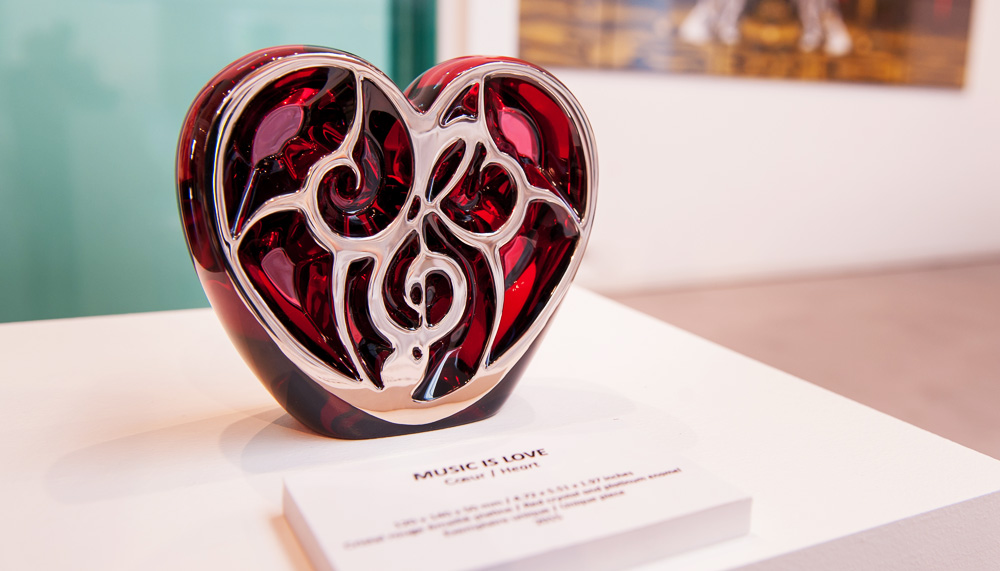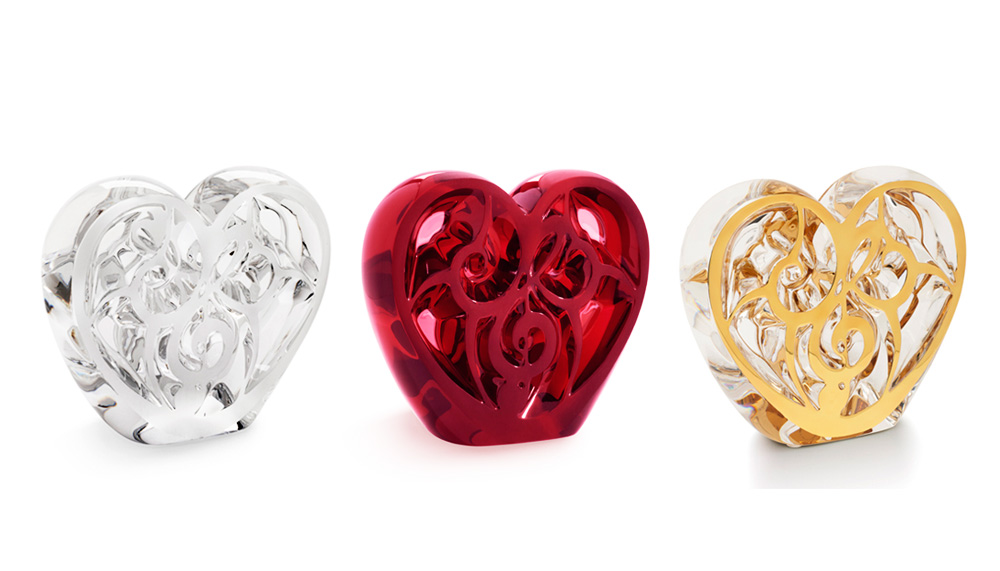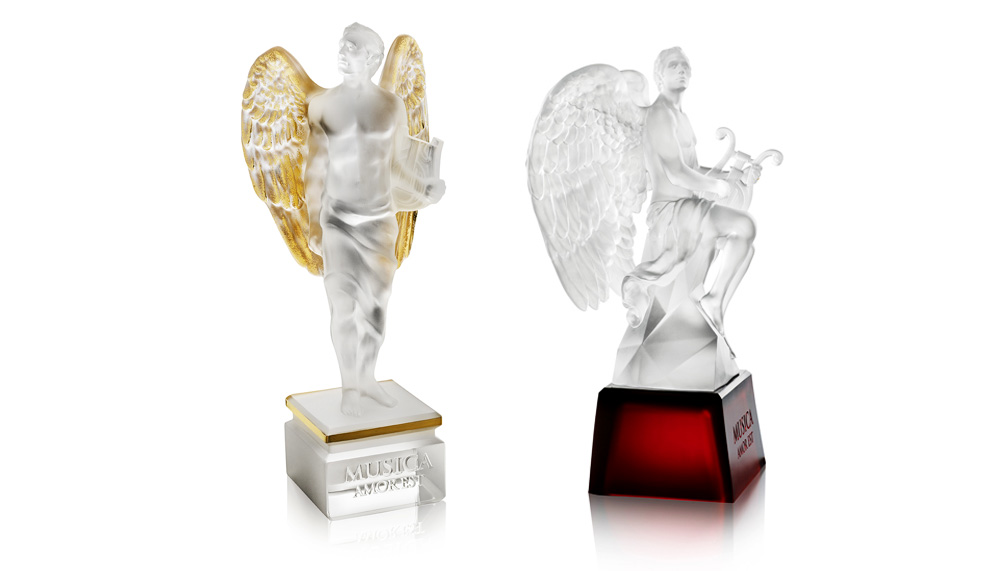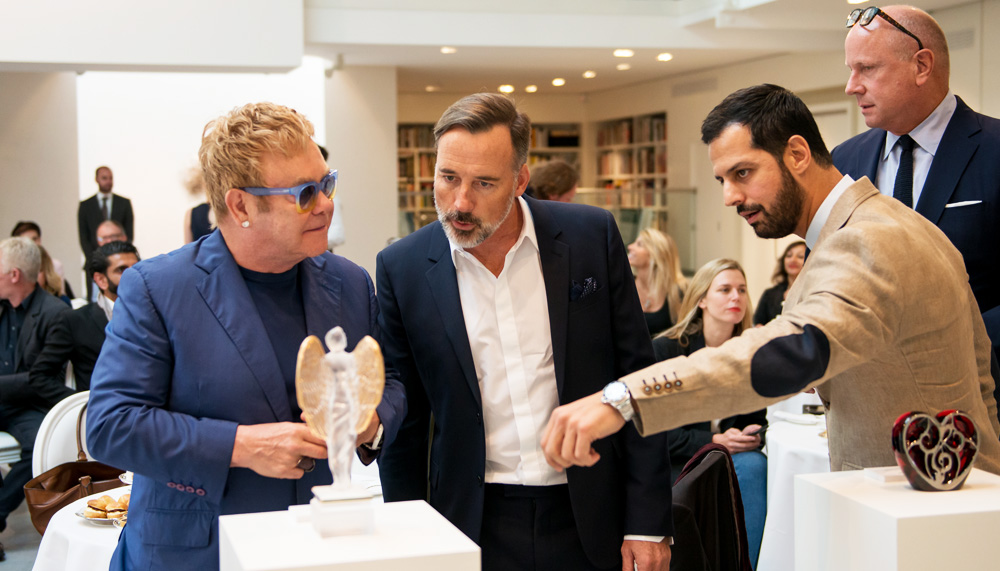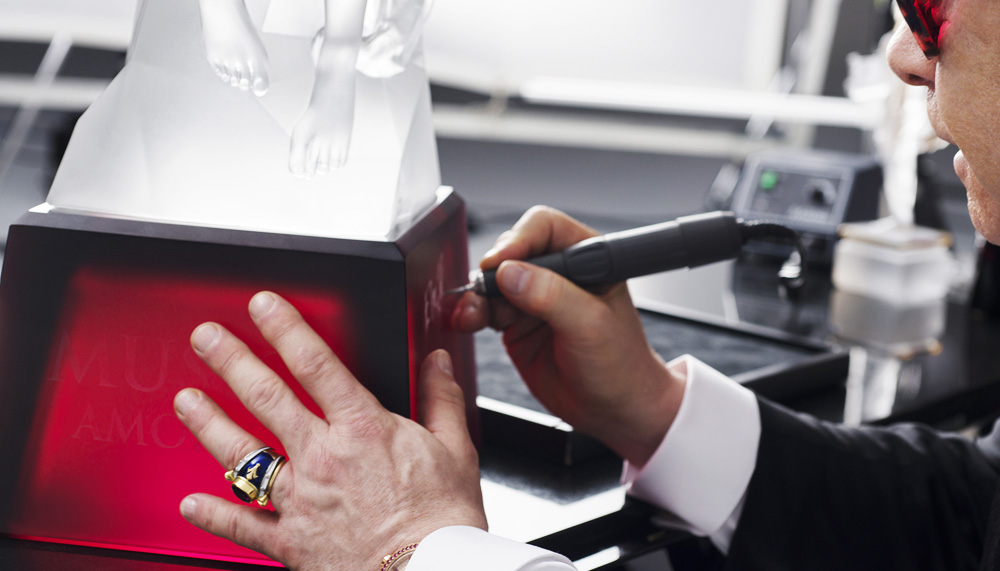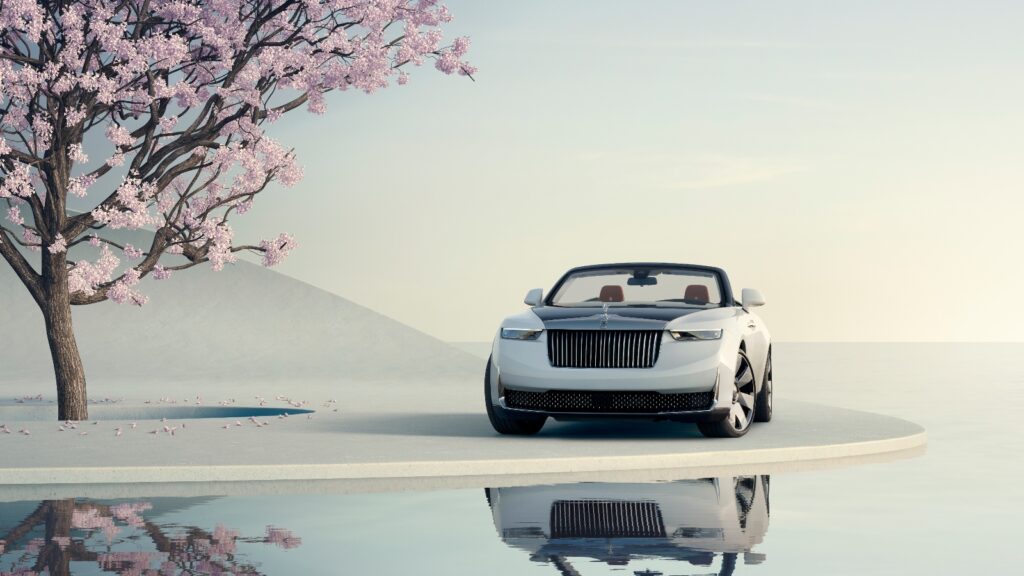Love and joy as Lalique meets pop star Elton John
There’s Damien Hirst’s The Inescapable Truth and Anthony Gormley’s Quantum Cloud. There are pieces by Louise Bourgeois and Philip Taaffee, photographs by Ruud Van Empel and David Bailey. And in a corner sits Grayson Perry’s Angel of the South, a small terracotta sarcophagus on which lies an alien figure. But, while Elton John‘s private art gallery on his estate near Windsor, UK, has much to look at, it’s another angel we’re here to see: a 29″ tall crystal angel – playing a lyre, not a piano – made by Lalique, 200-plus hours in the carving, and signed by John.
The piece, a one-off made using a rare and complicated technique – this one took 12 attempts before the French crystal house got it right – was designed by John with Lalique’s creative director Marc Larminaux, and will go to on-line auction during the Oscars next year, the money going to the Elton John Aids Foundation. It is expected to fetch upwards of US$150,000 (RM649,000). “But I’m hoping for a lot more than that,” says the singer/songwriter. “I’d buy it myself for $150,000…”
More accessible perhaps will be the smaller pieces – for the angel is merely the star of a new seven piece decorative crystal collection John has had a hand in designing. Three others will also be auctioned – an angel with gold stamping, a clear heart with gold enamel and a red heart with platinum enamel, expected to raise over $35,000 (RM152,000) each, and three further pieces – two kinds of 5″x5″ hearts and a smaller, 11″ tall angel – will be offered by Lalique through its boutiques in limited editions of between 499 and 999 pieces. Ten percent of the sale price – from £800 (RM5,180) to £1200 (RM7,780) – will go to the charity. John says he will be buying one of each of these. But then John is an enthusiastic collector of glass, claiming to have 4000-plus pieces in homes around the world.
“We’re passionate collectors of all the visual arts but have also collected Lalique pieces for years,” says John, referring to himself and partner David Furnish. “I had a great experience working with Lalique and, taking our conversations and turning them into designs that really surpassed my dreams. There’s a similar creative process whether you’re making music or glass, but I find working with crystal fascinating – it’s working with light, and with how light plays on glass at different times of the day.”
It was John who selected the theme for the collection – Music is Love – based around the notion of music’s ability to connect diverse and often conflicting peoples, a condition he suggests is required to arrest control of AIDS on a global scale. “I remember playing in Northern Ireland in the 70s and Catholics and Protestants couldn’t come together except at a concert, when for once they’re together as one – and that memory has always stayed with me,” says John. “These pieces are a way of raising money but also of carrying that vision out into the world through art. Hearts and angels are of course symbols of love. An angel is an obvious choice. Though this angel has grown up.”
John is referring to the updated touches given to the star piece: in many respects it’s a classical Renaissance angel, but his face and physique are 21st century – and he wears a wedding band. “I wanted the wedding band as another symbol of that commitment to love,” explains John. “When we were working on it it had only been a few weeks since David and I had got married, right here in this art gallery, so a simple band seemed appropriate. It’s been a long process.”
Indeed, Elton John and Lalique first began working on the pieces two years ago – they had worked together on a number of less show-stopping, cherubic pieces in 1997, also for Elton John AIDS Foundation, and clearly wanted to top those. This is why, while the limited edition pieces were made using an iron mould – allowing for multiples to be produced – the auctioned pieces were made using the more precarious lost wax mould technique, by which a wax model is carved, coated in plaster, heated to allow the wax to melt away and the plaster to harden, leaving a one-use mould into which to pour the glass.
“There is a lot that can wrong with this method,” notes Larminaux. “The crystal can fold, you get too many bubbles, the surface can’t be polished properly… I’ve worked on plenty of lost wax cast crystal pieces that just never happened in the end. But get it right and the results can be amazing.”
So perhaps any excesses in the design can spoil the piece. And these, perhaps surprisingly, do not have the fully contemporary style that describes John’s Windsor art collection. “It can be hard to translate someone else’s ideas when they’re not a designer too,” adds Larminaux. “But Elton really knows his glass. We worked with Damien Hirst last year, for example, and while he understands 3D forms of course, he doesn’t know glass.”
But love, hearts and angels? They’re not very rock ‘n’ roll are they? “Angels and hearts are clichés of course,” Larminaux concedes, “but the knowledge of our glass makers have brought a distinctive quality to them I think. And their complexity was such that, with the big piece especially, we were never sure they’d work out at all. For me it was a miracle that the large angel happened, which is appropriate.
“And actually it was Elton who reigned the design in from being much more modern, more twisted,” he adds. “We spoke about giving the angel an electric guitar maybe, or an ear-ring. But of course Elton wants to see all the pieces sell well – and the more different they are the harder that is. So these are real contemporary classics.”
